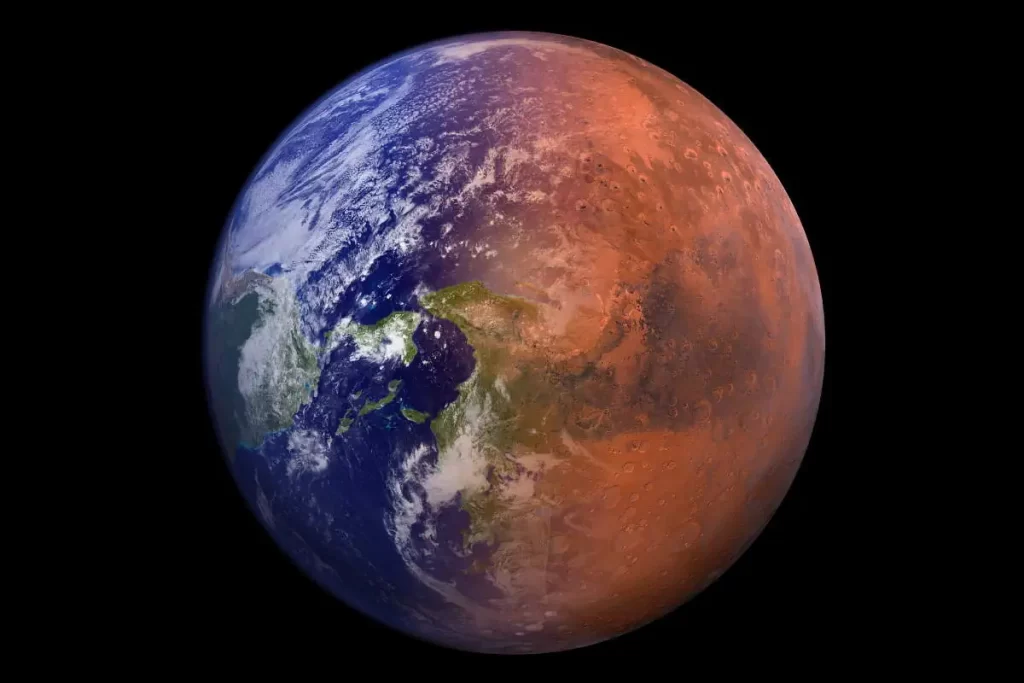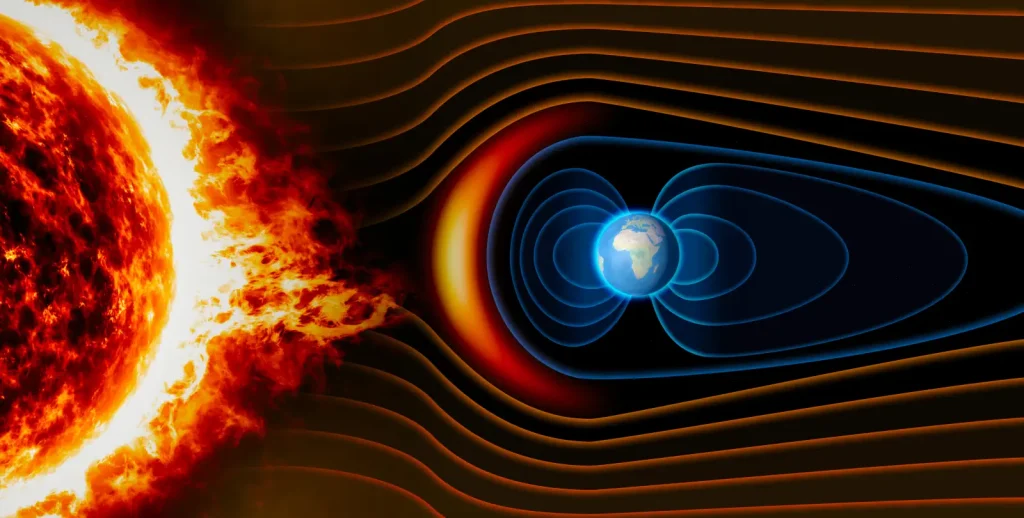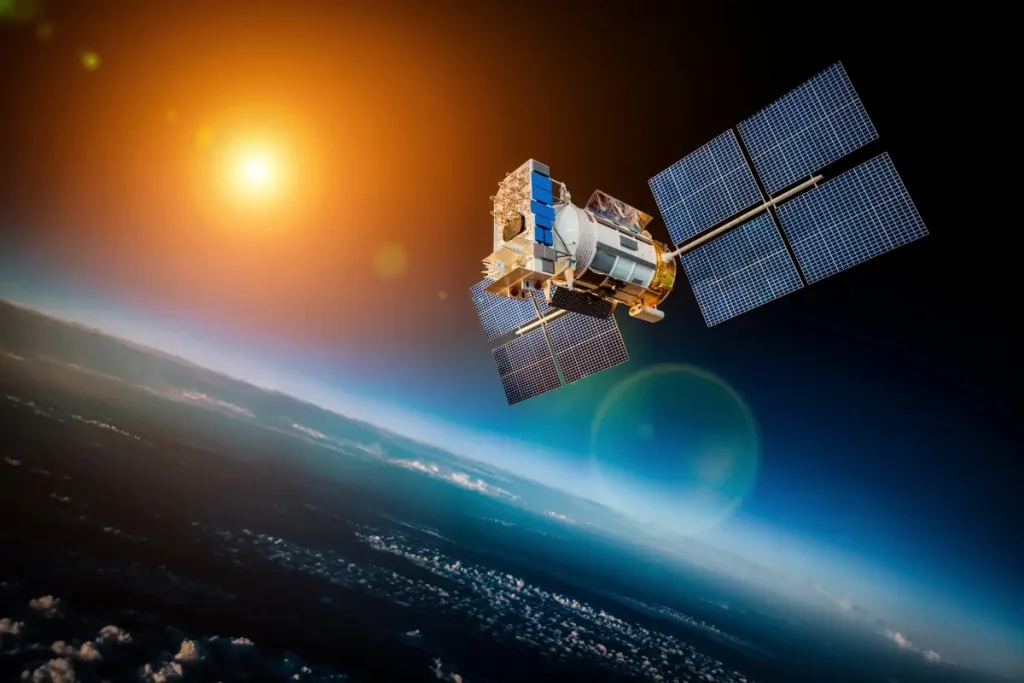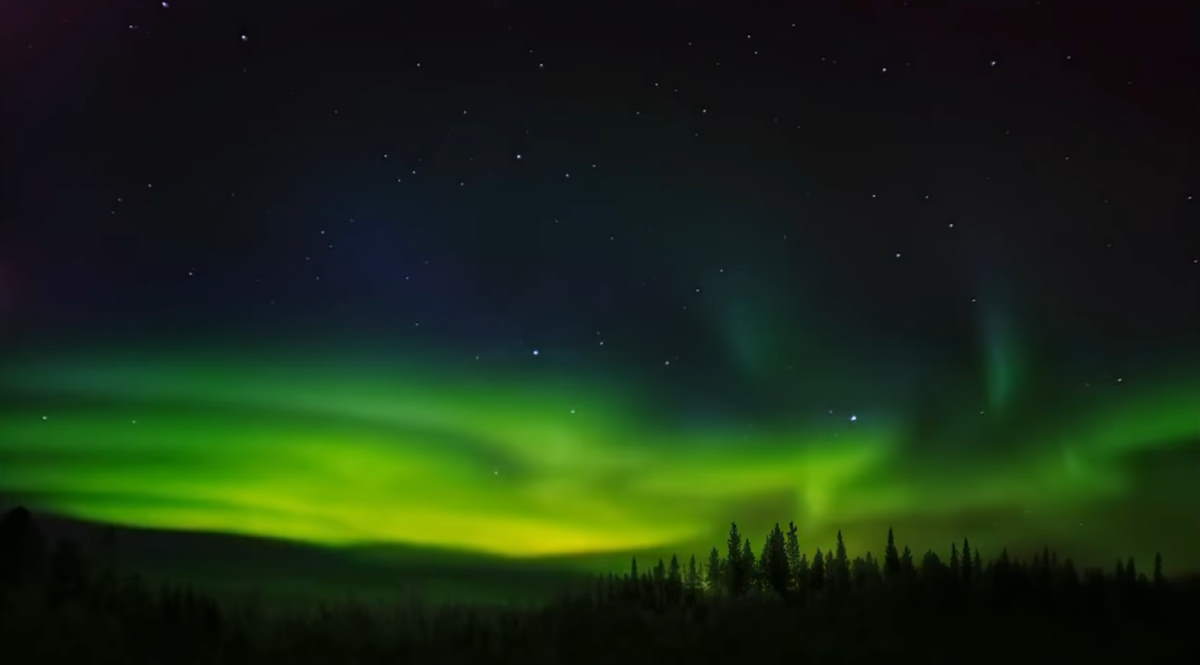When Earth’s magnetic field which forms the Earth’s magnetosphere is struck by violent geomagnetic storms, narrow streams of fast-moving ions can form, which pose serious threats to vital satellite systems. Through her research, Dr. Amy Keesee at the University of New Hampshire is shedding new light on how these streams originate, by picking up the energetic neutral atoms they occasionally generate.
Her team’s work has proved that these atoms can be used to build reliable temperature maps of the magnetosphere – the region around Earth dominated by the planet’s magnetic field. Such temperature maps can help us to better predict when satellite systems may be under threat.
Magnetosphere: Earth’s Protective Shield
The magnetic field which surrounds our planet provides a vital barrier against the streams of energetic ions which constantly hurtle towards us. Under the laws of electromagnetism, the paths of these charged particles are deflected by magnetic field lines, so that when they interact with Earth’s magnetosphere, particles that were previously on a collision course with Earth are repelled into space, protecting the planet’s surface from dangerous radiation.
Most of the time, these particles come in the form of electrons, protons, and helium nuclei originating in the Sun’s upper atmosphere, which permeates the solar system in a steady stream named the solar wind. In more extreme cases, particles can be ejected through violent eruptions of plasma on the Sun’s surface, named coronal mass ejections.

Related: How Mars Died? The Death Of Mars
Triggering Storms
These dramatic events send energetic blobs of plasma out into space, which carries significant magnetic fields of their own. As they clash with Earth’s magnetosphere, the magnetic forces induced by these blobs can generate shockwaves that reverberate throughout the entire system, in events named geomagnetic storms.
In turn, these shockwaves can generate violent and unpredictable movements in the ionosphere: a region in Earth’s upper atmosphere that is mostly unshielded from the Sun’s radiation. Here, atoms have been stripped of their outer electrons, leaving behind positively-charged atomic nuclei whose motions are directly influenced by surrounding magnetic fields. As these particles interact with the reverberating magnetosphere, the energy they gain can allow them to penetrate far deeper into Earth’s atmosphere.
This phenomenon can have destructive consequences for the satellite systems we now rely on for many vital applications: including communication, navigation, financial transactions, and national security. During geomagnetic storms, energetic ions and electrons can more readily cross paths with these orbiting satellites – damaging and potentially even destroying their electronics if they are still powered on. This makes it particularly crucial for researchers to understand the coupled dynamics that play out in the magnetosphere and ionosphere when geomagnetic storms strike.

Heated Ion Slingshots
Dr. Amy Keesee and her colleagues at the University of New Hampshire explore one particularly important aspect of this process, which stems from the unique geometry of Earth’s magnetic field on its night-time side. While the field lines facing the Sun are continually compressed by the solar wind, those on the opposite side form an elongated “magnetotail” – which points away from the Sun and extends far out into interplanetary space.
As the energy deposited during a geomagnetic storm reverberates around the magnetosphere, it will eventually be dumped in the magnetotail. This causes the tail’s elongated magnetic field lines to act like a slingshot – capturing particles within small sections of the magnetosphere, heating them up, and sending them hurtling toward Earth.
These channels of fast-moving ions are a major part of the threat faced by orbiting satellites during geomagnetic storms, but so far, they have proven notoriously difficult to study. The problem is that these channels don’t emit secondary particles of their own – like how a star can be analyzed by the photons it emits, for example.
Ultimately, the only way to study them is to place observational instruments directly in their path. This is particularly challenging, since the events are both unpredictable and short-lived, making it increasingly difficult for researchers to observe them directly. So far, these challenges have prevented researchers from making accurate predictions of when and where heated channels of ions will arise; and subsequently, how satellite systems can be better protected from them.
Searching for Energetic Neutral Atoms
Dr. Keesee and her colleagues have been developing a way around this barrier, which could make the process far easier to study. Their approach is based on searching for particles named energetic neutral atoms (ENAs) – which only emerge in rare circumstances but may offer vital clues as to what is happening in the magnetotail during geomagnetic storms.
ENAs are generated when fast-moving atomic nuclei steal orbiting electrons from the neutral atoms they interact with, while barely losing any of their original energy. As ordinary atoms, the paths taken by these new particles are no longer influenced by the shape of Earth’s magnetic field, leaving them free to travel unabated toward the planet’s surface.
By detecting the ENAs that make it to the inner magnetosphere, some researchers have proposed that the particles could be used to study localized bursts of charged particles in the magnetotail. So far, however, it has remained unclear whether this link can really be made.
For example, while ENAs have been observed at around the same time as geomagnetic storms in the past, similar observations have also been made without any concurrent evidence of energy being injected into the magnetosphere – placing doubt on whether ENAs could really be used to study the magnetosphere’s deeply complex dynamics.

Measurements with TWINS
To shed new light on the problem, Dr. Keesee’s team analyzed the ENA observations made by NASA’s Two Wide-Angle Imaging Neutral-Atom Spectrometers (TWINS) mission, which ran from 2008 until 2020. On top of this, they aimed to recreate narrow streams of ions within simulations of real geomagnetic storms – incorporating the coupled interactions between charged particles and moving magnetic fields.
In one recent study, the team used their simulations to create a temperature map of the magnetosphere, in which higher ion temperatures are associated with local-scale accelerations within the magnetotail.
“We used a novel technique to observe these ions by calculating ion temperature maps of the magnetosphere using data from energetic neutral atom imagers,” says Dr. Keesee.
As they had hoped, the maps produced by their simulations largely agreed with the temperature maps generated by TWINS through its ENA measurements. This was a particularly welcome surprise – providing robust evidence that ENAs are indeed a reliable indicator of where ions are being heated and accelerated.
The researchers did find that the ion channels observed by TWINS were hotter than those that appeared in their simulations. All the same, they hope that these differences could be ironed out through further improvements to their simulation techniques, which consider the many different factors involved in the accelerations in greater detail.

Mapping the Earth’s Magnetosphere
In an additional study, Dr. Keesee and her colleagues combined ENA observations from TWINS with direct observations of energetic streams of ions made by orbiting satellites. They also included ground-based measurements of Earth’s magnetic field, and observations of the aurora: the famous light display commonly seen in Earth’s polar regions, where ions can penetrate far enough through the magnetosphere to interact with the atmosphere.
While this phenomenon usually occurs since Earth’s magnetic field lines dip below its surface above its poles, leaving the atmosphere exposed to outer space, the disruption unleashed by geomagnetic storms can make the aurora visible at lower latitudes.
With these combined measurements, the researchers examined the changes that unfolded within the ionosphere and magnetotail during a real geomagnetic storm, triggered by a coronal mass ejection in 2012. They discovered that the ENAs picked up by TWINS both prior to and during the storm were closely associated with streams of charged particles being heated and accelerated in the magnetotail – but only after a reconfiguration of the Earth’s magnetic field were enhancements picked up by the magnetic field and aurora-measuring instruments.
Early Warning Systems
The team’s results are already incredibly promising – proving definitively that the ENA measurements provided by the TWINS mission could realistically be used to create temperature maps of the magnetotail. Crucially, they also show that the same instrument could be used to examine how local-scale temperatures in the magnetotail vary over time, without any need to send spacecraft to monitor its unpredictable dynamics directly.
These maps could be particularly crucial when geomagnetic storms are imminent. If coupled with observations of coronal mass ejections on the Sun, they could provide a more accurate weather forecast for the magnetosphere – allowing researchers to better predict when bursts of energetic ions are more likely to penetrate closer to Earth’s surface.
In turn, the techniques developed by the team could provide more effective early warning systems for satellite systems. By paying close attention to these warnings, satellite operators could assess when their instruments may be vulnerable to incoming streams of ions – signaling an urgent need to power their systems down.
Although this would incur financial and operational costs in the short term, it could also save satellites from potentially irreparable damage – allowing them to remain fully operational during future solar storms.
In her current research, Dr. Keesee is working with colleagues that are designing a new generation of imaging instruments. If achieved, these designs could ultimately produce maps of the magnetotail’s constantly varying temperature in unprecedented detail, based on ENA measurements alone.
Meet the researcher

Dr. Amy Keesee completed her Ph.D. in Plasma Physics at West Virginia University in 2006.
After working for several years as a researcher and lecturer at West Virginia University, she started her current position in 2018 as an Associate Professor in the Department of Physics and Astronomy at the University of New Hampshire.
Her main research interests include the physics of Earth’s magnetosphere, the development of instruments to measure charged particles in it and to study of plasma in the lab.
She is ultimately driven by the vital need to protect our communication systems from damaging radiation during solar storms, which often involves combining satellite-based data with advanced computer models with the eventual goal of space weather forecasts.
Dr. Keesee is currently spearheading new developments of plasma spectrometers, which could measure charged particles from aboard compact and affordable satellites.
Contact
- E-mail: Amy.Keesee@unh.edu
- Web: https://ceps.unh.edu/person/amy-keesee
Team Members
- Victor Pinto
- José Marchezi
- Mayowa “Tomi” Adewuyi
- Michael Coughlan
- Raman Mukundan
- Joel Tibbetts
- Anusree Devanandan
- Ricky Gorby
- Ben Antognetti
- Isabella Householder
Key Collaborators
- Earl Scime, West Virginia University
- Roxanne Katus, Eastern Michigan University
- Hyunju Connor, NASA Goddard Space Flight Center
- Natasha Buzulukova, NASA Goddard Space Flight Center
- Christine Gabrielse, Aerospace Inc.
- Raluca Ilie, University of Illinois-Urbana-Champaign
- Slava Merkin, APL
- Matina Gkioulidou, APL
Funding
- NASA, including the Center for Geospace Storms DRIVE Center
- National Science Foundation, including NSF EPSCoR
- Department of Energy
Further reading
- AM Keesee, N Buzulukova, C Mouikis, EE Scime, Mesoscale structures in Earth’s magnetotail observed using energetic neutral atom imaging, Geophysical Research Letters, 2021, 48, e2020GL091467.
- M Adewuyi, AM Keesee, Y Nishimura, C Gabrielse, RM Katus, Mesoscale features in the global geospace response to the March 12, 2012 storm, Frontiers in Astronomy and Space Sciences, 2021, 8, 746459.
Source
This article originally appeared in Scientia, with the title “Dr. Amy Keesee | Mapping the Magnetosphere with Energetic Atoms”. Read the original article.
- An Innovative Medium-Voltage DC Circuit Breaker for Renewable Power Grids - October 13, 2022
- Scientists are mapping the Earth’s Magnetosphere with Energetic Atoms - September 30, 2022
- Scientists are Developing Recyclable and Self-healing Plastics - August 9, 2022
